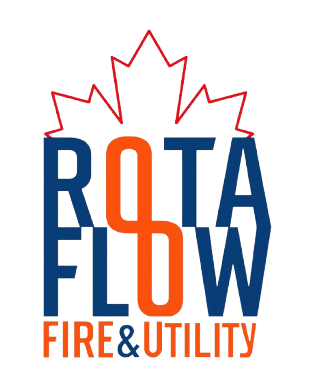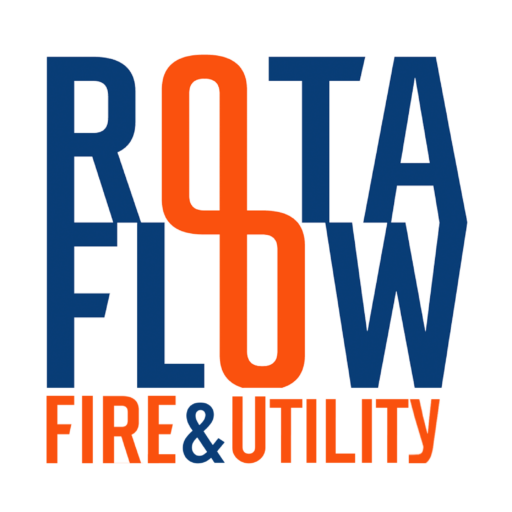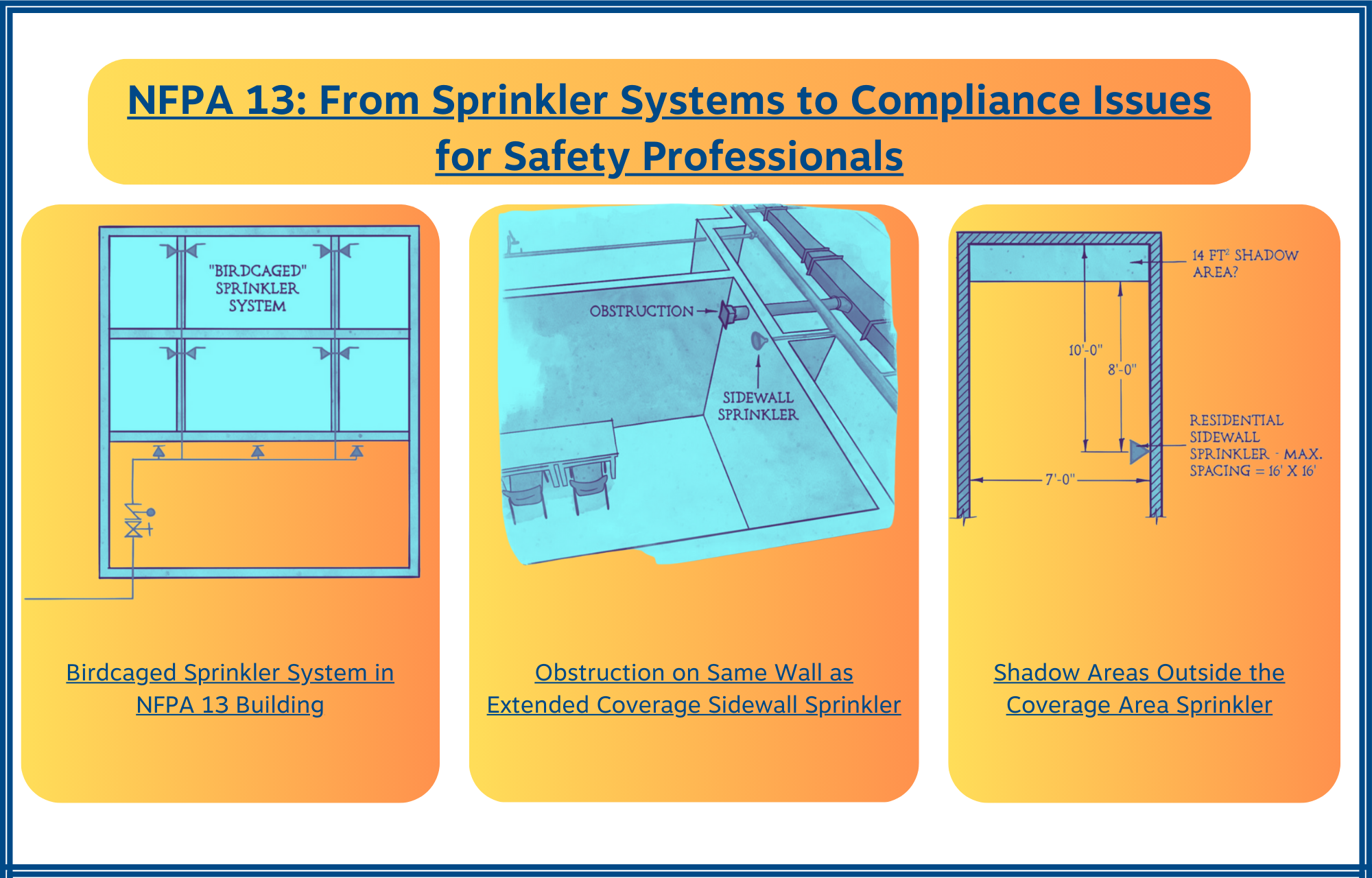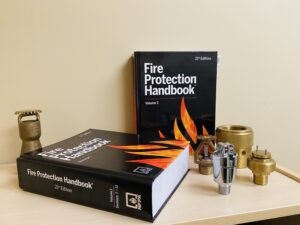Summary: Fire protection and safety standards are vital for protecting structures and people from potential risks. Understanding and applying the complexities of NFPA standards like NFPA 13, 24, and 25, among others, is critical for architects, engineers, and safety personnel. In this comprehensive blog, we delve into various questions and clarifications about these standards, covering nuanced topics ranging from sprinkler systems in multistory buildings to the specifics of fire pump flow tests and sprinkler placement in unusual settings such as combustible pergolas. Negotiate the complexity of NFPA standards by providing extensive analysis and explanations, including information on residential sidewall sprinklers, fittings beneath structures, and the use of quick response sprinklers in bathrooms.
Let’s seek to provide clarity and assistance for professionals navigating the world of fire safety laws and applications in a variety of structural situations by unravelling these standards and addressing actual circumstances.
1. Birdcaged Sprinkler System in NFPA 13 Building. Description- NFPA 13 allows for a multistory building with horizontal first-floor plumbing and vertical risers for upper levels as long as the total square footage does not exceed 52,000. Section 16.9.10 of NFPA 13 requires floor control valve assemblies for multi-story structures but exempts buildings under 52,000 square feet for light hazard occupancies like residential spaces (as per Section 4.4.1). Question 1. Can NFPA 13 defend a multistory building with horizontal sprinkler pipe on the first floor and vertical rises to feed the floors above if the total square footage is less than 52,000 square feet?
Answer: In a mild hazard residential occupation, a multi-story building can have horizontal plumbing on the first floor and vertical risers to feed the upper floors, with a total square footage of no more than 52,000 square feet.
Section 16.9.10 of NFPA 13, 2016 edition, specifies the requirement for floor control valve assemblies. Section 16.9.10.1 requires multi-story structures over two storeys to have a floor control valve, check valve, pressure gauge, main drain valve, and flow switch to isolate and control water flow for each floor level. Section 16.9.10.3 states that the floor control valve, check valve, pressure gauge, main drain valve, and flow switch are not necessary if the total area of all floors does not exceed the system protection area limits of 4.4.1. Section 4.3.2 uses residential occupancies as an example of a light hazard. According to Section 4.4.1, sprinklers can protect up to 52,000 square feet of floor area per sprinkler system riser or combination system riser from light hazards.

2. Fire Pump Flow Test Evaluation. Description- Section 8.3.7.4 of the 2014 version of NFPA 25 says that if the degradation is more than 5% of the initial unadjusted acceptance test curve or nameplate, an investigation must be carried out to find the cause. Question 2. Does the 5% apply to both churn pressure and 150% capacity, or only rating capacity?
Answer: The 5% degradation applies to all three test points: churn, rating, and 150%. Section 8.3.7.2.3(2) of NFPA 25’s 2017 version clarifies this. NFPA 20 authorizes layout technicians to design sprinkler systems that use up to 150% of the fire pump capacity. This test ensures that the pump can satisfy the fire system’s demands. Installing a main pressure relief valve on a fire pump prior to 1993 may not meet the 5% churn test due to the amount of water discharged from the valve.
3. Sprinklers under Combustible Pergolas. Description- NFPA 13, 2016, does not provide explicit rules for sprinklers installed under pergolas. Section 8.15.7, on the other hand, discusses standards for flammable projections that are wider than 4 feet, with some exceptions. The 2022 update classifies outside projections as heat-gathering structures that require sprinklers under solid-roof pergolas unless certain noncombustible materials or regulated concealed spaces exemptions apply. Question 3. Are sprinklers required under combustible pergolas (cedar) that exceed 4 feet in width? Is Section 8.15.1.2.18 of the 2016 version of NFPA 13 applicable for this situation?
Answer: The query is whether sprinklers are necessary “under the pergola.” However, the part quoted is 8.15.1.2.18, which covers “Exterior Soffits, Eaves, Overhangs, and Decorative Frame Elements.” This section discusses the requirement for sprinklers in the hidden area that the aforementioned architectural features create. Please note that the charging part is 8.15.1, labeled “Concealed Spaces.”
If the question is about sprinklers under a pergola, section 8.15.7, “Exterior Projections,” is more relevant. This section outlines sprinkler standards for specific building characteristics.
Sprinklers are required for flammable projections over 4 feet in width (8.15.7.1), unless an exception mentioned in 8.15.7.2, 8.15.7.3, or 8.15.7.4 applies.
Pergolas sometimes lack a solid roof, so sprinklers installed underneath may not function properly. The 2016 edition of NFPA 13 did not define an outside projection; however, the 2022 edition clarified the idea.
The 2022 edition of NFPA 13 includes a definition for exterior projections (see Section 3.3.73). This section defines an outside projection as follows:
An extension of an outside wall capable of gathering heat from below.
To be designated as an outside projection, the structure must be able to accumulate heat and activate sprinklers positioned beneath it. Pergolas with open “trellis” ceilings cannot collect heat and so do not require sprinklers, according to the new 2022 definition.
Pergolas with solid roofs can absorb heat, necessitating the use of sprinklers (per Section 8.15.7), unless an exception applies. The exceptions are:
- The pergola is made of noncombustible, limited-combustible, or fire-retardant-treated wood or has a noncombustible frame with flame-resistant fabric overlay, as demonstrated by Test Method 2 in accordance with NFPA 701, Section 8.15.7.2.
- The pergola’s finish material is noncombustible, limited-combustible, or fire-retardant-treated wood, and there are no unsprinkled combustible concealed spaces, or the combustible concealed spaces meet one of the three conditions.
4. Residential Sidewall Sprinklers with Differing Deflector Distances. Description- Residential sidewall sprinklers in the same area can be set at different distances from the ceiling, according to NFPA 13, 2013 version. While rules recommend placing deflectors between 4 and 6 inches from the ceiling, residential sidewall sprinklers have a range of 6 to 12 inches. The specification does not require uniform placement within a compartment, allowing for variations between 4 and 12 inches to accommodate impediments and maximize sprinkler efficacy. Question 4. Is it acceptable to install residential sidewall sprinklers at different heights from the ceiling (e.g., 6 inches and 12 inches) to reduce the impact of a nearby blockage on only one of the sprinklers?
Answer: The standard allows residential sidewall sprinklers in the same compartment to be fitted at varied elevations from the ceiling.
According to NFPA 13, 2013 edition, residential sprinkler deflectors should be positioned within 4 to 6 inches of the ceiling, unless the listing allows for a greater distance (Section 8.10.4.2). Residential sidewall sprinklers have deflector distances ranging from 6 to 12 inches to the ceiling.
The standard does not require sprinklers to be at the same distance from the ceiling in the same compartment. Sprinklers can be put between 4 and 12 inches apart, as per the standard. Adjusting the deflector distance from the ceiling within this range can help overcome impediments. To know more book appointment with lunch & learn at Rotaflow.
5. Fittings Under a Building. Description- NFPA 24 authorizes underground pipe to extend 10 feet beneath the building. Question 5. Is it acceptable to install a horizontal elbow on the water service entry under a structure as long as the 10 feet dimension is not exceeded?
Answer: Yes, NFPA 24 does not apply to elbows in the subterranean. Elbows must be included in hydraulic calculations.
NFPA 24, 2019 edition, Section 10.4.3 permits for underground extensions up to 10 feet, but does not specify fittings or elbows.
In the 2022 version, this provision was updated to specify that underground services can only expand horizontally for a maximum of 10 feet. Adding the phrase “cumulatively” allows for a horizontal fitting in a 10-foot stretch of horizontal piping. The 2022 edition adds a notation that limits the total length of horizontal pipe beneath the building to 10 feet.
It should be noted that any fittings cannot be installed directly beneath the footings.
6. Shadow Areas Outside the Coverage Area Sprinkler. Description- A sprinkler system is installed in a residential structure following the 2016 edition of NFPA 13R standards. NFPA 13R permits for shadow regions of up to 15 square feet. Question 6. Can shadow area provisions apply to corridor ends where sprinklers cannot reach?
Answer: The shadow area regulations (6.4.6.3.3.1) cannot be applied to sprinklers that are too far from a wall. To be categorized as a shadow area, the space must be:
- Within the sprinkler’s protection zone
- an area that is blocked by a barrier or wall.
This term appears in the definition of a shadow area (Section 3.3.10), which reads:
Shadow area. The dry floor region within a sprinkler’s protection area caused by a wall or partition blocking the sprinkler discharge. The annex to this section (A.3.3.10) reinforces this concept, which reads in part:
To be considered acceptable, the shadow region must be within a sprinkler’s coverage area. This means that water would be discharged straight into the space without a structural or architectural feature.
The specified circumstance does not meet the required conditions, as it is not within the sprinkler’s protection area or blocked by a wall or partition. Instead, it is simply placed too far away from a wall.

7. Automatic Ball Drip Location. Description- A ball drip must be installed between the check valve and the Fire Department Connection (FDC) in a new freezing-zone dry pipe sprinkler system that complies with NFPA 13, 2016 edition. This automated drain reduces water accumulation, aids in system maintenance by keeping the piping dry, and ensures effective firefighting capabilities in emergencies. Positioning the ball drip at the lowest point of the FDC piping ensures proper drainage and prevents freezing. Question 7. Can you place a ball drip somewhere between the check valve and the FDC?
Answer: To ensure proper drainage, place the ball drip at the lowest position of the fire department connection piping. If water becomes trapped between the system side and the check valve, an auxiliary drain is necessary.
According to NFPA 13, 2016 edition, Section 8.17.2.6, plumbing between the check valve and outside hose connection must have an approved automatic drain valve for freezing zones.
According to Annex Section A.8.17.2.6, if water becomes stuck in the piping between the system and the fire department connection check valve, an auxiliary drain is necessary.
If the check valve in the fire department connection leaks, the automatic drain (ball drip) removes the water to a safe area while keeping the pipework between the check valve and hose couplings dry. Without an automatic drain, pooled water could freeze, preventing the fire department from pumping into the system during fire conditions. This automated drain allows for easier maintenance of the fire department connection pipes as it is already free of water. Place the drain at the lowest position of the fire department connection piping to ensure complete drainage.
8. Private Waterworks System. Description- A new prison is being built with a sprinkler system in line with the 2022 edition of NFPA 13. The project will contain a private tank and pump for both domestic water and a fire loop. The pump is a domestic kind that does not comply with NFPA 20. Question 8. Can a residential pump and tank supply both domestic water and a fire loop in a prison?
Answer: A pump and tank system that is licensed for public or private waterworks can service both home and fire protection systems.
According to NFPA 13, Section 5.2 of the 2022 edition, connecting to an approved public or private waterworks system in compliance with 5.2.2 is permissible. According to Section 5.2.2, a reliable waterworks system is considered an appropriate source of water supply.
The specification specifies that the water supply must come from an “approved” public or private waterworks system. Section 3.2.1 defines authorized as acceptable to the AHJ. Section A.3.2.1 states that the authority may seek proof of correct installation, method, or use. The authority with jurisdiction may review a product evaluation organization’s listing or labeling methods to ensure conformity with current production requirements for listed items.
NFPA 20 recognizes the use of pumps in public and private water sources for both household and fire defense purposes. According to Section A.4.7.1 of the 2022 NFPA 20, these installations include:
Such pumps are not fire pumps and are not expected to meet all of the specifications of this standard.
As long as the analysis required by Section 4.6 finds that the pumps are reliable, they are acceptable for fire protection. Evaluating reliability should include at least the degree of supervision.
and quick response to problems, as is customary in municipal water systems.
Both home and fire protection needs can be satisfied by a private water system that the AHJ has approved.
9. Unreinforced Plastic Pallets Without Marking. Description- The project owner believes the plastic pallets are unreinforced; however, they are not marked. According to the 2019 edition of NFPA 13, unreinforced plastic pallets are now classified into one class and reinforced plastic pallets into two. NFPA 13 requires unreinforced pallets to be permanently marked. Question 9. Does Section 20.3.2.2.1.1 require the maker to supply the permanent symbol showing the pallet's reinforcement, or can the oner do so?
Answer: The permanent emblem must be applied by the maker. The maker should permanently stamp or mark the pallet as unreinforced.
Pallets are often not labeled as reinforced or unreinforced, making it difficult to detect their status. Section 20.3.2.2.2.2 assumes the pallet is reinforced if there is no marking on it.
10. Underground Valves and Monitoring. Description- An underground gate valve in a roadway box is part of a private underground water main. In NFPA 24, it says that these valves don't need to be watched. But in Section 903.4 of the International Fire Code, there doesn't seem to be an exception to the need for supervision for underground valves. Question 10. Is it necessary to electrically supervise subsurface gate valves in sprinkler system highway boxes?
Answer: Based on the 2021 version of the IFC, the answer is no. Previously, the fire code required monitoring of these valves as they were not specifically exempted in Section 903.4. A new exemption was added to the 2021 IFC to solve this issue. NFSA advocated for an exception in the 2021 IFC, exempting certain valves from Section 903.4’s monitoring and supervisory obligations.
The 2021 IFC reform aimed to align oversight of subterranean gate valves across the IBC, IFC, and IEBC. It removes the monitoring obligation for private subsurface gate valves and places them under supervision exceptions. As a result, subsurface gate valves with special keys do not require supervision or monitoring. According to the 2015 IFC Commentary for Part 903.4.1: “Exception 1 recognizes that underground key or hub valves in roadway boxes are not normally supervised or required by this section or NFPA 13.” The IBC/IFC did not intend to need monitoring for these valves, but they were not officially exempted until the 2021 IFC. The IFC recommends NFPA 24 (via IFC 507.2.1) for installing private service mains.
NFPA 24, Section 6.7.3, does not mandate supervision of underground roadway gate valves, regardless of ownership.
11. Sprinklers that respond quickly Bathrooms in NFPA 13R. Description- According to the 2016 version of NFPA 13R, quick-response sprinklers can replace residential sprinklers when there are four or fewer units per housing unit. NFPA 13R enables sprinklers to be removed from restrooms measuring 55 square feet or less. Question 11. Can quick response sprinklers replace residential sprinklers for small bathrooms?
Answer: NFPA 13R allows for the removal of sprinklers in bathrooms under 55 square feet due to the low fire load and lower danger. This omission is not exclusive to the sprinkler type.
Quick response sprinklers can be utilized to protect a housing unit with four or fewer sprinklers, as specified in Section 6.2.1.3. According to Section 6.6.2, bathrooms smaller than 55 square feet are not required to have sprinklers.
12. Obstruction on Same Wall as Extended Coverage Sidewall Sprinkler. Description- A mechanical duct protrudes from the same wall where an extended coverage sidewall sprinkler will be put. Please see the attached figure. Question 12. Is this an obstacle to the sprinkler? What is the appropriate obstruction rule based on the 2022 edition of NFPA 13?
Answer:This conduit strikes a single EC sidewall sprinkler, making it an isolated obstacle. In the 2022 edition of NFPA 13, Section 11.3 specifies installation criteria for horizontal sidewall sprinklers with increased coverage. Section 11.3.6.1.5 may apply to the image provided. This provision requires that impediments protruding from the same wall as the extended coverage sprinkler be at least 6 inches away.

Courtesy: Roland Asp, CET, TechNotes



